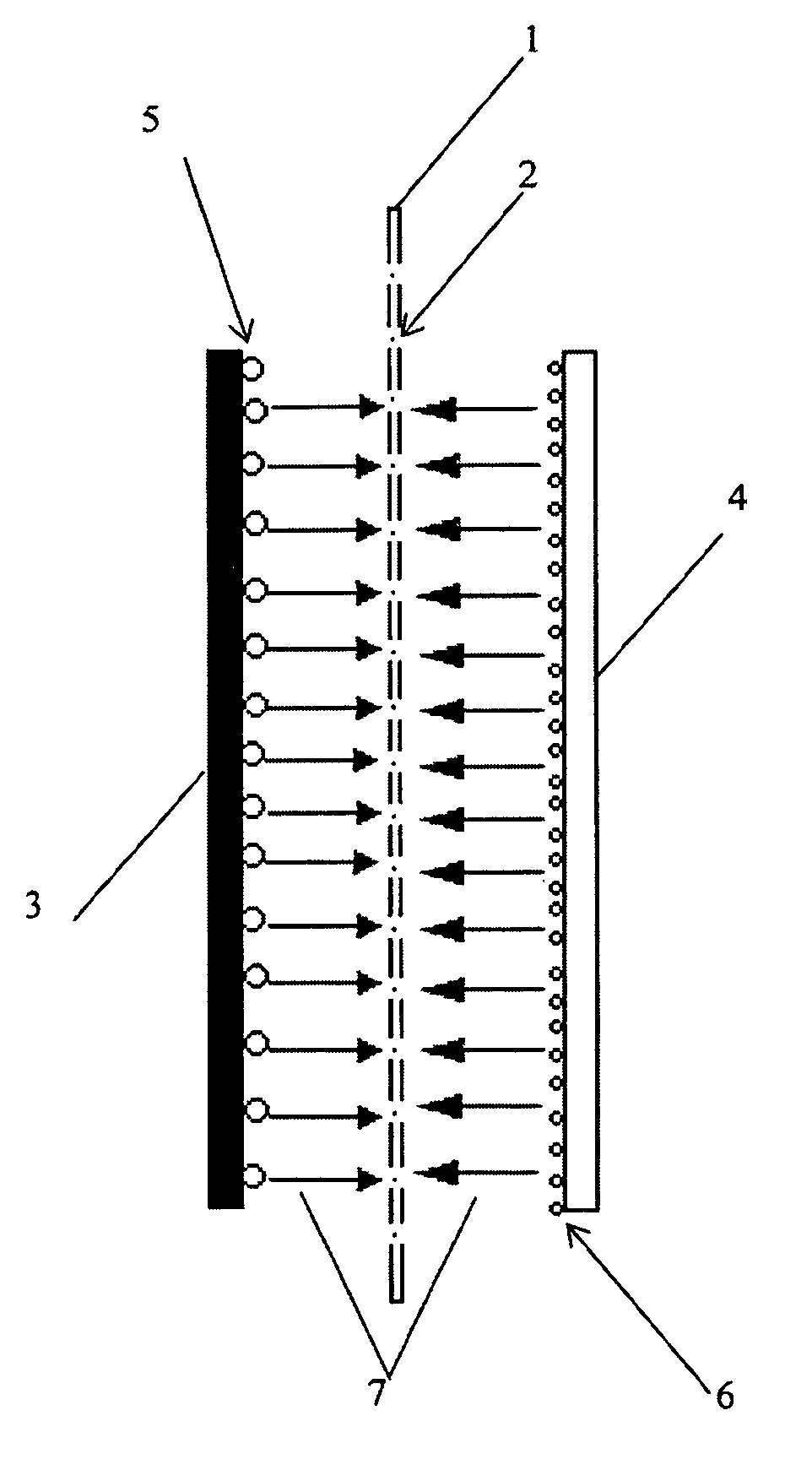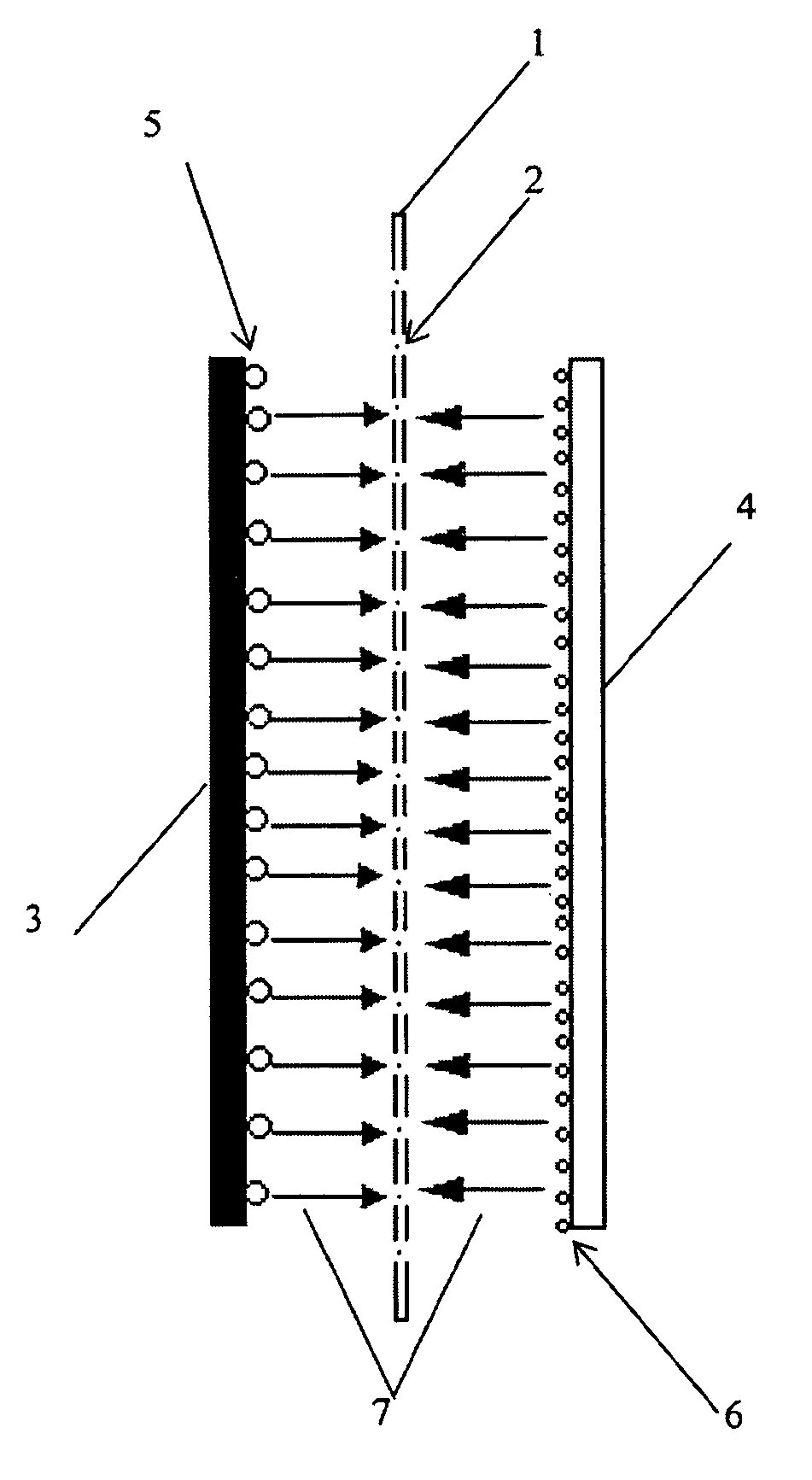Composite membrane for a capacitor
a capacitor and composite membrane technology, applied in the field of composite membrane for capacitors, can solve the problems of increasing internal pressure, reducing the life cycle of the supercapacitor, and the safety valve of the supercapacitor remaining open all the time, so as to improve the comprehensive performance of the supercapacitor, reduce the maintenance of such supercapacitors, and increase the energy density of the supercapacitor system
- Summary
- Abstract
- Description
- Claims
- Application Information
AI Technical Summary
Benefits of technology
Problems solved by technology
Method used
Image
Examples
example 1
[0032]In a sealed stirrer such as a magnetic stirrer, add poly(ethylene oxide), 10 wt. % Pt / C (such as carbon-supported platinum nanoparticles produced by Johnson Matthey) into an acetonitrile solution to form a mixture. The content of the poly(ethylene oxide) is 6-15 grams, preferably 8-10 grams, and most preferably 9 grams. The content of the 10 wt. % Pt / C is 150-210 mg, preferably 170-190 mg, and most preferably 180 mg. The acetonitrile solution is 200-1000 ml, and preferably 400-800 ml. The temperature of the solution was maintained at about 60° C. to about 80° C. The mixture was placed into a sealed container and an inert gas was added to the sealed container. The mixture was continually stirred for at least 18 hours under protection of the inert gas until the mixture gets into solution. Then, the solution was transferred to a glass container. A polypropylene membrane (such as Celgard™) was placed in the container and soaked in the solution mixture for 1-2 hours. Then, the memb...
example 2
[0034]In another example, an ultrasound stirrer was used to stir the solution mixture. A dispersion resin such as a cationic 5 wt. % proton curing exchange membrane resin (such as Nafion™ produced by DuPont Company) and 10 wt. % Pt / C catalyst (such as carbon-supported platinum nanoparticles produced by Johnson Matthey) were mixed in an isopropyl alcohol solvent to make a mixture. The content of the cationic 5 wt. % proton curing exchange membrane resin was 5-15 grams, preferably 8-12 grams, and most preferably 10 grams. The content of the 10 wt. % Pt / C catalyst was 150-250 mg, preferably 190-210 mg, and most preferably 200 mg. The content of isopropyl alcohol solvent was 200-400 ml, preferably 280-320 ml, and most preferably 300 ml. The mixture was stirred continually for about 30-60 minutes with an ultrasonic stirrer to form a slurry mixture. The slurry mixture was sprayed onto both sides of a polypropylene membrane (e.g., a membrane produced by Celgard™). The membrane was dried in...
example 3
[0036]In this example, asbestos fibers, polyvinyl alcohol and 10 wt. % Pt / C (such as carbon-supported platinum nanoparticles produced by Johnson Matthey) were mixed through a wet papermaking method to make a 30-60 μm thick composite membrane. The content of asbestos fibers was 30-75 grams, preferably 40-60 grams, and most preferably 50 grams. The content of polyvinyl alcohol was 1-5 grams, preferably 2-4 grams, and most preferably 3 grams. The content of the 10 wt. % Pt / C was 200-600 mg, preferably 300-500 mg, and most preferably 400 mg.
[0037]A supercapacitor cell was made with the composite membrane of this example and a high power test was conducted on the cell. Compared with regular membranes, the test results showed that no obvious gas release was seen when the overcharge potential reached 1.75 V for the composite membrane of this example as compared with a regular membrane under the same test conditions.
PUM
| Property | Measurement | Unit |
|---|---|---|
| thickness | aaaaa | aaaaa |
| temperature | aaaaa | aaaaa |
| thickness | aaaaa | aaaaa |
Abstract
Description
Claims
Application Information
 Login to View More
Login to View More - R&D
- Intellectual Property
- Life Sciences
- Materials
- Tech Scout
- Unparalleled Data Quality
- Higher Quality Content
- 60% Fewer Hallucinations
Browse by: Latest US Patents, China's latest patents, Technical Efficacy Thesaurus, Application Domain, Technology Topic, Popular Technical Reports.
© 2025 PatSnap. All rights reserved.Legal|Privacy policy|Modern Slavery Act Transparency Statement|Sitemap|About US| Contact US: help@patsnap.com


